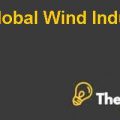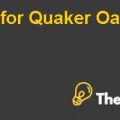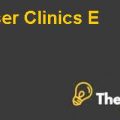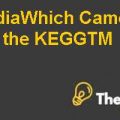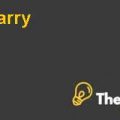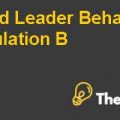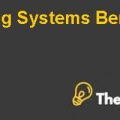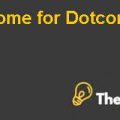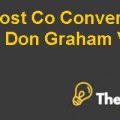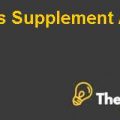
QUESTION 1: HOW SHOULD WOJCIECH GEBICKI RESPOND TO THE BANKER’S CONCERNS?
ANSWER:
The CFO of the company “Wojciech Gebicki” should confidently present the project to the bankers for the loan, as the cash flow of the financial projection indicates favorable results. It represents that in recent years there will be shortfall for 2 years, because even after the investment received from different bondsthe motorway is in the construction phase, then for ten years the inflow will be coming in the company as the operating cost is negligible. But in year thirteen,the company has to face pitfall because repayment of the bonds will be started for three years. So the point is, the company ultimately has positive cash flow. On this analysis the bank should accept the project, but if they do not, then to convince the shareholders for more capital, the company could increase the cost of equity to satisfy the shareholders. In addition, the CFO could also issue more zero-coupon bonds on which guarantee is not applicable. The company can also issue right shares which raises the capital from the shareholders. Lastly the company has one more option that is to make contracts with the private equity firm which provides additional 60 to 90 million euros.
QUESTION 2: WHAT ARE MAJOR RISKS? HAVE THEY BEEN PROPERLY IDENTIFIED, ASSESSED, AND MITIGATED UNDER THE CURRENT STRUCTURE? HOW SEVERE IS THE TRAFFIC RISK?
ANSWER:
The major risk which threatened the Motorways industry includes:
- Labor risk
- Inflation risk
- Government risk
- Construction risk
- Operating risk
- Traffic risk
1: LABOR RISK
The labor risk associated with the A2 motorway includes that whether the laborers working are satisfying enough that they won’t leave in the middle of the construction. Another threat is that the labor, working there should not make labor union which give negative effect. To mitigate the company should provide some rest or make 2 shifts for working.
2: INFLATION RISK
A second risk that threatened the motorway includes that the material prices that used in the construction process, should not go higher in the process.The company should hedge the prices for safety purposes.
3: GOVERNMENT RISK
It includes that the government didn’t change mind in between the project because of the deficits that can be faced by them. To mitigate the company should make up to the government by proper contracting.
4: CONSTRUCTION RISK
Construction risk is associated with the stakeholders that the surroundings should not disturb or create any problem for construction. Before starting the construction company should solve the problem of the people living in there.
5: OPERATING RISK
Once motorway is built and even after that there are some expenses which have to bear by the company such as destruction cost, maintenance cost, etc. It cannot be mitigated but can be minimized by the instant process.
6: TRAFFIC COST
It is the risk for which the motorway is built. The motorwayis built for the passage of vehicles so they can reach their destination on time. The only way to mitigate this risk is by properly designing before the construction.
QUESTION 3A: WHO BEARS THE MAJOR RISKS?
ANSWER:
The risks that are defined above have to be faced by the company. And in the long run the effect will be transferred to the shareholders and lenders because it’s their money that have been invested in the company.
QUESTION 3B: WHY AND WHAT ARE THE GOALS OF RISK MANAGEMENT?
ANSWER:
The main purpose of the risk management is to create value for the organization, which in turn enhances the decision making process. It creates a better market image and by this the company’s market value will rise. Sometimes risk can become a threat and when this threat is properly managed it turns into opportunities for the company.
QUESTION 3C: CLASSIFY THE MAJOR RISKS.
ANSWER:
Labor risk, construction risk, operating risk and traffic risk are classified as business risk, as these are associated specifically with the company that generate the business and brings revenue to the organization.Whereas Inflation risk is classified as the financial risk as it affect the cash system of the company.
QUESTION 4: RISK MANAGEMENT STRATEGIES. WHAT STRATEGIES HAS AWSA USED? ARE THEY OPTIMAL?
ANSWER:
The company AWSA has planned some dramatic strategies like they have planned to make open toll road that means that these toll roads will be placed at the side corner of the road rather the closed toll road which placed at the entrance and exit of the road or shadow troll in which payment is done by the government not by the public. On open toll road the revenue will be greater. In addition the company has a diversified business which is a good thing that if one business got in lessthan other business will be offset that business.......................
This is just a sample partial case solution. Please place the order on the website to order your own originally done case solution.
Autostrada Wielkopolska SA (AVSA) is a consortium of 18 companies that won the concession to build and operate the first private road Poland losses. In June 2000, the chief financial officer AVSA, Wojciech Gebicki, preparing for a meeting with bankers project lead, to discuss the problems they are relatively traffic forecasts and earnings forecasts. Based on the problems, bankers asking sponsors to give extra e60 e90 per million shares in the deal, a significant increase of the projects worth e934 million and current liabilities of equity sponsorship E235 million. This request represents a serious problem for Gebicki (AVSA) because the concession expires in six weeks, if the funding is not closed because it has very few options to solve this problem. This case describes the structure of the transaction and invites students to accept or challenge the view Gebicki that key risks are identified, assessed and mitigated so that senior creditors are adequately protected without the continued support of capital. "Hide
by Benjamin C. Esty, Michael Kane Source: Harvard Business School 18 pages. Publication Date: December 18, 2001. Prod. #: 202030-PDF-ENG

